#permiculture
Text
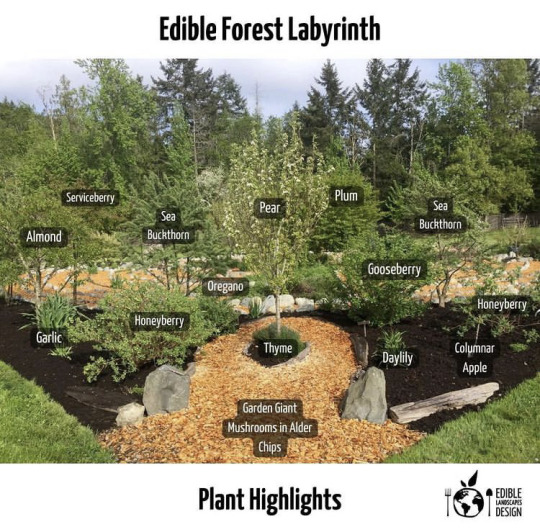
Grow trees.
74 notes
·
View notes
Video
youtube
If you’ve met me in person or have followed me on instagram, you’ll know how I feel about lawns, the usage of fungicide sprays instead of systemics, how I think smokey the bear is one of the biggest perpetuated lies/ propaganda machines in forestry history, how I feel about the honey bees in the United States and the misrepresentation of the “save the bees” campaign has increased problems, and how vermiculture and the idea of using surface earthworms in compost has caused reprehensible and some of the most detrimental issues to our ecosystems as a hole. Areas where the phenology of egg laying worms conflicts with fire ecology and burn zones that are highly compartmentalized or continuous burn zones despite either human (first nations) land management or natural or areas where we have glacial fronting history had deep earth worms but never had frequent upper surface earth worms. We are so deeply effected them from the destruction of bacterial and mycological communities that decline in forests. Upper surface earth worms in the US are also what aids establishment of invasives and can even increase foreign allelopathic desertification faster. If you know about ground dwelling bees, or overwintering insects, you should be concerned. If you know about salamanders and foodweb interactions for birds and reptiles as well as small rodents, you should be concerned. From the composting and fishing communities continued usage this decline will only increase. If you live in the subtropical south flat lands post burn we have worms that can thrive because their phenology for surface appearance never is disrupted by burn season, instead it’s beneficial. These earthworms (deep soil) resolve themselves to earth until it’s time to lay eggs.
https://www.dnr.state.mn.us/invasives/terrestrialanimals/earthworms/index.html
https://ecosystemsontheedge.org/earthworm-invaders/
#surface earthworms are invasive in much of the united states#invasive species#vermiculture#compost#ecology#composting#permaculture#permiculture#botany#horticulture#cottage#cottagecore
18 notes
·
View notes
Text
Hey if you have questions about vegetable gardening please ask me I am a vegetables experts for real
1 note
·
View note
Text
Top predictions for 2023 - its more of the same from what we've been experiencing and I don't see anything major happening. I've sat with this for awhile and Spirit would like you to know the two key idea are preparedness and caring for your neighbors/community.
More debates over politics, political unrest, the v - more of the divide and conquer paradigm. Shut the news off - really.
Food shortages, food scarcity and especially food insecurity. Start a local community garden with your neighbors and learn about Victory Gardens. Research permiculture gardening and sustainable food orchards and gardens. The great news is that you can propagate a lot of food with existing foods you already have in your home either with stalks or seeds. Remember soil health is far more important than heirloom seeds (sorry not sorry) and most varieties of fruits and veggies are cultivars of pest and disease resistant plants. Research about how to grow winter crops. There is plenty of information about these topics - I encourage you to look.
Housing market takes a huge hit as does the stock exchange and watch how you invest your money. Institutions got rid of FDIC, the fail safe insurance that was put in place after the stock market crash which led to the great depression in late 1929 and much of the 30s. I've been hearing that could happen again sometime in late March or early April. Set aside some money in a coffee can - yes, crazy I know.
Health care in this country continues to self distruct and we'll really feel the haves vs the have nots. While you're researching gardening techniques research herbs and essential oils too.
More crazy weather - I can't stress enough to have an action plan in place for wild summer weather and winter weather as well. Firewood. Batteries. Cellphone charging bricks. Secure a reliable water source, and food source and please consider your neighbors who aren't as able-bodied as you are.
✨️Blessings, love and light in this upcoming year. ✨️

0 notes
Text
What's the difference between organic and chemical fertilizers?
When we buy fertilizers, they generally have NPK listed on the front, which gives the concentration of nitrogen, phosphorus, and potassium in the fertilizer. Organic fertilizers typically are sourced from plant or animal sources, while non-organic or chemical fertilizers are specific elements that we've determined plants need, and may have been synthesized in a lab or mined from the earth. Why might you favor one type of fertilizer over the other? It comes down to nutrient availability, which is a double edged sword. To understand why, we need to know a bit about mycorrhizal fungi.
Plants need nitrogen and other minerals, and when growing without excessive fertilizers, they form symbiotic relationships with ecto and endomycorrhizal fungi, which have vast mycorrhizal networks with incredible surface area. This allows the fungi to much more efficiently absorb minerals and water from the soil, which they exchange for plants' root exudates, which have sugars that the plants have fixed through photosynthesis. Plants with these symbiotic fungi are more resilient to disease and drought, and grow better. The mycorrhizal fungi can also reduce plant's uptake of heavy metals, and can prevent nutrient rich runoff.
When nitrogen, potassium, and especially phosphorus are too available, plants kick out their symbiotic fungi because they no longer need them to get these nutrients. However, this has a down side: symbiotic fungi protect against pathogenic fungi, so now those plants are more vulnerable to fungal infections. They also can no longer can take up water as easily, along with other micro nutrients that may or may not be in the fertilizer.
However, you may have noticed that I didn't specify chemical fertilizers in the above paragraph, and that is because you can see the same effect in some organic fertilizers, like manure, rock phosphate, bone meal, etc. So it's not JUST chemical fertilizers that can negatively impact fungi and their symbiotic relationship with plants- it's any fertilizer that is too rich and too available. If our goal is to support mycorrhizal networks, ideally we would add just enough fertility and in a form that is more available to fungi than plants, thus encouraging those symbiotic relationships.
However, that does not mean that chemical or readily available fertilizers don't have their place. If I'm growing something in a pot and it's going to be in a pot it's whole life, I'll often use some kind of fertilizer that I wouldn't use in my garden. Chemical or quick release fertilizers are great for when you've spotted a nutrient deficiency and want a quick turn around for your plants. I usually use some very rich sources of fertility for my cucurbits and raspberries, but learning this has made me rethink this practice.
I think an apt analogy between a box of strawberries and a soda. The box of strawberries has sugar, but it also has more micronutrients and will feed the kind of symbiotic bacteria we want in our gut in the long term. Meanwhile, the soda has a lot of sugar which will rapidly increase our blood sugar and feed the kind of bacteria that aren't as beneficial. However, if your blood sugar is crashing and you need to bring it up, the soda is the better choice. Each has their place, and it's best to analyze your situation and determine which is the better choice.
If you want to read more, here's some sources:
"A Gardener’s Primer to Mycorrhizae: Understanding How They Work and Learning How To Protect Them (Home Garden Series)" by Linda Chalker-Scott, available for free from WSU.
"The complete guide to restoring your soil Restoring your soil" a book by Dale Strickler, very in depth and a great book to read if you want to know more about soil.
This is a very complex topic and our understanding is expanding rapidly. I could not possibly cover everything there is to know about this in a single post, but I do think this is at least a good taste.
#soil#organic gardening#permiculture#regenerative agriculture#soil fertility#sustainable gardening#sustainable agriculture
102 notes
·
View notes
Photo

8 more trees ordered! 🤞 fishing is stellar this year, trees are expensive 😬 Just 960 left to purchase, now if only a few would arrive to plant! #alaska #offgrid #offroad #offgridalaska #homesteading #cabinlife #alaskanbush #planttrees #nature #permiculture https://www.instagram.com/p/B_bwl8DAdv4/?igshid=nzwitthdum0g
#alaska#offgrid#offroad#offgridalaska#homesteading#cabinlife#alaskanbush#planttrees#nature#permiculture
0 notes
Photo
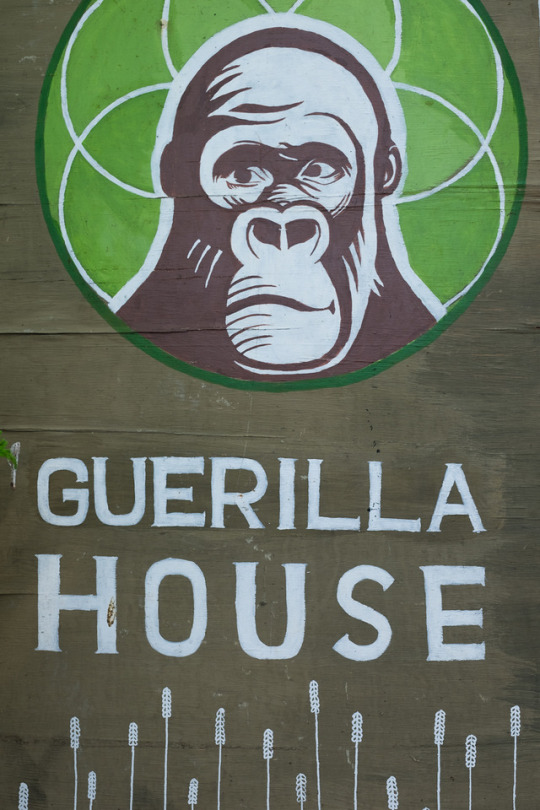
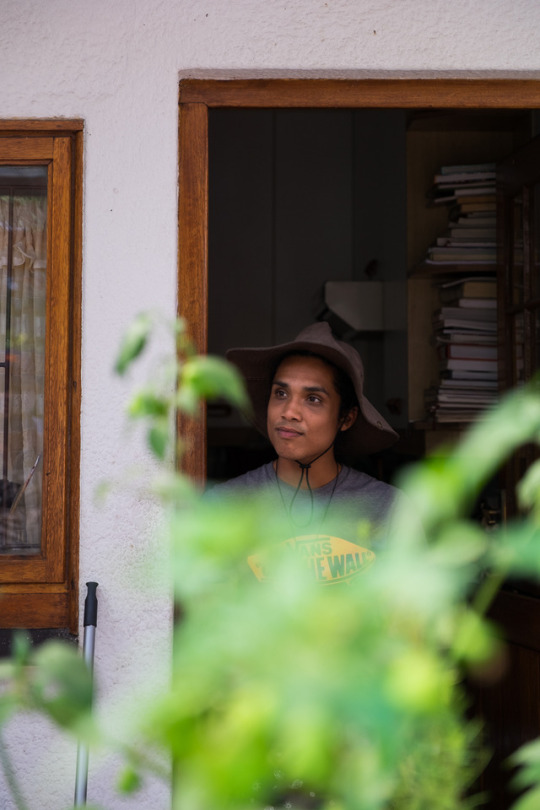
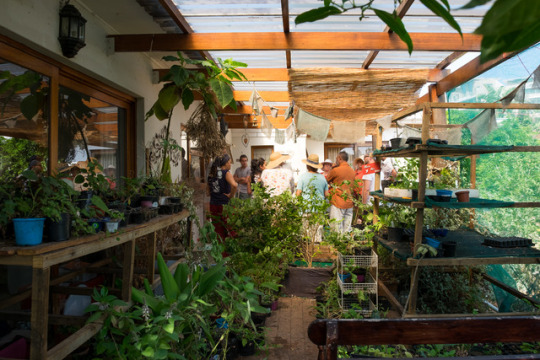
from one of Guerilla House’s workshops
2 notes
·
View notes
Text
PLEASE READ: A NOTE TO OUR READERS
Hey, so, I noticed that this blog just got followed by a bunch of very blatant radfems, and I just want you to all to know that both contributors to this blog are transgender, in a healthy happy relationship, and soon to be foster parents.
We are a registered nurse and a homemaker, building community in our area, with a dream to help manage food insecurity in our neighborhood by using and teaching permiculture practices on our urban homestead. We have 1,000 sq feet of garden, preserve food, give away free seeds and gardening advice to anyone who wants them, and this summer will have a pay-what-you-can farm stand. We eat primarily home-grown, foraged, and salvage food. I volunteer at a free urgent care and teach medical students. My wife, who uses the pronouns she/they, is an REMT who has done disaster response throughout the country. I have a masters degree in public health and served as a Team Leader in AmeriCorps.
I give you this information because contrary to good tumblr advice we are not auto-blocking for hate content. I know we don't update much, but we do want the information of this blog to be available to anyone who needs it. If you choose to stay, I hope that you use this blog as a stepping stone to understand that the people who taught you to hate deserve to be questioned, their fear replaced with your knowledge, and that you deserve to gain some real-life experience from people who have lived through transition, and now live our most authentic lives where we can finally do good for the world and our community in it.
Transphobia is borne of misinformation, and it does real harm to real people. Questions in the form of asks are welcome, even those without perfect wording, but we reserve the right to protect ourselves from hate, including blocking.
21 notes
·
View notes
Note
I have lots of questions about RTTS but with respect to you and other fans, I'm just going to ask 2 questions. What would the different currently space age societies look like before they entered their industrial revolution? Like what kind of tech or government or whatever you can think of. Then, what kind of pets or fauna do the different races keep or farm?
For the sake of length I'm mostly gonna talk about their agricultural history here. The only species I have designed livestock/pets for so far is avians, and the rest of them are works in progress.
Avians before major industry were primarily scattered communities fishing for a living, supplemented on big enough islands with grain, bug, and nut agriculture. The largest landmasses had the biggest agricultural variety, and much more “tetrapod” livestock. Airsled, that comic on Patreon, is set during their threshold period for industry so if you wanna know more about this you should check it out (unsubtle wink). I also have drawings of the livestock up there.
Scuds primarily farm animals, but because most of them are sessile and filter feeding it works a lot more like horticulture. Think of oyster farms, anemones, mussels, urchins, etc. They also practice algae farming, but it's much trickier than animals because the sperm, eggs, and young thalli of algae are mostly microscopic. Especially before industry, algae farming was usually accomplished by finding an area the desirable species already grew, and then 'weeding out' all the undesirable animals and algae. Completely clearing an area and then adding adult transplants from elsewhere was also common. Modern agriculture often involves clearing and laying of the proper substrate, then injection of gametes/spores into the loose substrates and application of gel on the hard substrates (sometimes underneath a current-blocking fabric to improve retention).
Centaurs were at the threshold when aliens arrived, so... stuff I've described about their culture already is pretty much that. Their livestock agriculture is much more extensive than their horticulture, so the average rural homesteader clan would have a large range with a wild area for hunting and gathering, a fenced area to keep in livestock, and a small garden for herbs and some of the more cooperative tuber plants. Even further back, most centaurs were nomadic, carrying their housing and following herds of back and forth through seasonal migration. Some clans would migrate up and down almost the full length of the continent, because herds would follow the extreme seasonal sunlight. For herbivores, the near total darkness of non-equatorial winters means all your food is either dormant or dead. The majority of their livestock breeds look eerily similar to centaurs due to a recent evolutionary choke-point, with the usual combination being HUGE bison-like grazers (bigger than centaurs, who are 10-11 feet tall on four feet) for meat, and little goat-like fellows for animal products like nutritional silk, larvae, fiber, and occasionally slaughter.
Bug ferrets were tending to their planet's vast underground maze long before they were even sapient. As pollinators, their ancestors would help spread the range of tunnel-spreading fungi and chemosynthetes. Preindustrial ferrets did this kind of long term architectural permiculture as their main method of creating spaces to live in and farm. Most of their animal livestock is small, buggy things-- ferrets are among the biggest things in their tunnels, and with no drive to keep family pets they usually prioritize economy of space and resources in their livestock.
I drew their alien food (except for scuds) and went into other deets here.
118 notes
·
View notes
Text
Garden Report 20.07.05
I can now id all the squash >;) there is yellow crook neck, black beauty zucchini and round ball zucchini ... this last one I have no idea where it came from. It might have been mislabeled at the seed exchange at the farm (I say this because I thought I picked up a winter squash seed there). I don’t know, its food/edible so that is always a plus. Extra can be given away or dried for winter.
I have my little locust helping me. My eldest daughter who hates english ivy and bamboo (I have both unfortunately) is taking her frustrations out on the moon vine. I appreciate this greatly <3. She gets that look of determination on her face, a halo of frizzy hair and she’s off! I tease her she is my little french pony as she admires Laura from the Little House books.
Did a deep water on the garden as that when I am at my worst, it gets neglected and with all this wind, every thing was begging for a drink. I am going to see if the boy can’t get all my drip we brought with us. Its stored as a tangled mess in the loft of the carriage house.
The glads, strawflowers, snapdragons, violas, roses, Romneya coulteri 'Matilija Poppy' , daisies, jupiter’s beard, lavender, and yarrow are all in bloom. Found some discarded and broken pavers for the front. The grass is in pretty tight and the weed barrier pretty old so its causing a bit more tussle than I would like. I really want to spare all the dutch clover I can -- its good for the bees and will offer some help with the chamomile.
Getting ready to take the third harvest of artichokes and fourth harvest of rhubarb. Superb year. Not just two huge loads as usual but more like mid range and consistent. Same for alpines and blue berries. The kiwis are just looking fantastic! I am still getting little cherry tom volunteers popping up! I should lift them to pots to see if I can’t get them to grow inside and maybe have fresh homegrown cherry toms for christ mas?
Making two elevated perches and a swing for dear pullets. Only Bronte still wants to be my friend ... or is it -- dominate me? I had her out riding on my shoulder but when it came time to get off because I had to go do a kid pick up, she was very incensed, didn’t want off, went to my head top then gave an angry shite down my braid and leg. That did not bode well. Now she’s mad I won’t take her for rides. Like, let me don a shower cap and shite shield cape, k?! Then I will play pony for the princess pullet. I no longer live in fear Rossetti will be a cockerel -- she looks good. She may even outgrown Bronte. Alcott is doing well but she is smaller than both. I hope she catches up before winter. With daily rations of meal worms, I would hope! I have to rest a lot ... sitting and listening to all the other banty / small sized cockrels going off around the neighborhood is very delightful as they are like little whispering roos sounding off. I like to imagine since I can not get to the countryside, God is letting the country come to me. Wouldn’t that be nice! All the people creating their own little urban homesteads: balconies, back yards, gardens every little nook and cranny?! I think that would be wonderful and more people would be happier.
#catholic gardener#gardening#garden#chickens#urban homestead#permiculture#flowers#squash#weeds#farming in the city#harvesting
0 notes
Text


I’m doing a no till system or lasagna system for a backyard that had lots of overgrown weeds and areas of dry dirt with nothing growing. Basically I’m trimming the overgrown trees and placing trimmings and recycled paper all over the yard mimicking a forest.
5 notes
·
View notes
Video
Are you interested to learn scientific way of organic farming through our experienced permiculture expert? Virtual Volunteering opportunity is starting from 1st July onwards for 4 to 8 weeks duration. Apply soon. What's app: +919830150249 @smilengo #Virtualcamps #permiculture #organicfarming #savetheplanet #safefood (at SMILE Society- Voluntary Service Organization) https://www.instagram.com/p/CB2UiaBnOm9/?igshid=p0dqfhvc6jvv
0 notes
Photo

Kilted Indian #moneyless #happiness #freedom#permiculture #travel #vanlife #adventure #payitforward #freegan
0 notes
Text
Understanding What Makes Plants Happy
Like us, plants have their own language. If you saw our post on Geoff Lawton’s Pattern Understanding you will see that nature has its own rules, patterns and ways of connecting.
Somehow, over time we humans have become disconnected or perhaps we are disrespecting our plant’s natural botanical body language and behavior that could help put plants…
View On WordPress
#Botanica#California#Featured#Gardenhood#Geoff Lawton#horticulturalist#Landscape Architect#New York#New York Times#Pattern Understanding#Permiculture#Plant Language#plants#Sustainability#Vegan#Washington
0 notes
Text
Behold, my hops:
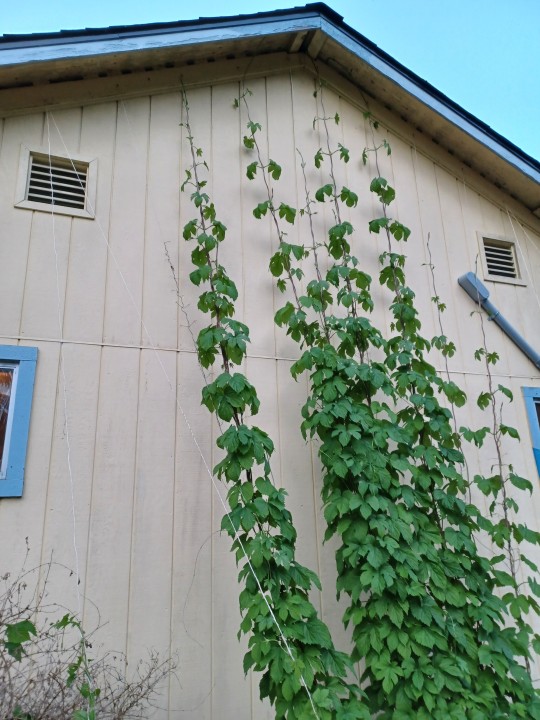
This is only their second year with me, and look how tall they've gotten! This is the west side of my house, and their entire purpose is to slade it, this reducing the internal temperature.
I really lucked out because I got them for free from someone who's new puppy was chewing on them. They're in a pot:
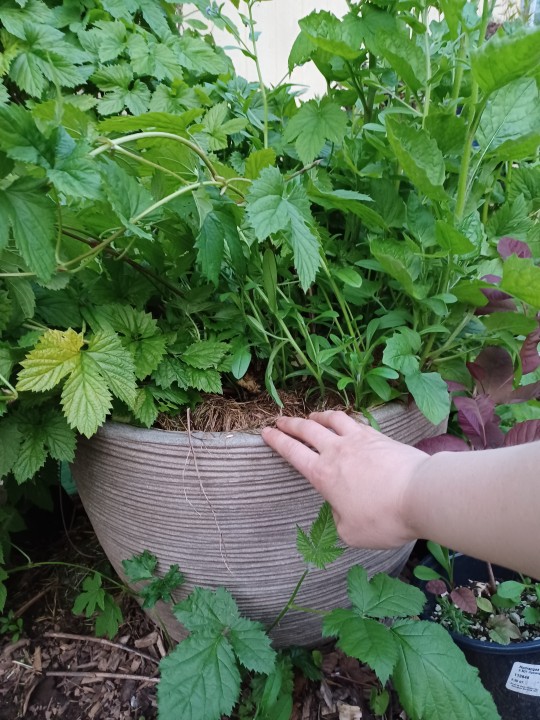
So they can't spread in the ground. It's still pretty early in the season so they should fill in quite a bit up top though. I have two other pots which I put free bare root hops in last year, but they're not as full yet. The pots don't have bottoms, so they're well rooted into the ground as well.
Long term, it would be nice to plant some trees to the west, but alas, power lines. I'd need some really short trees.
19 notes
·
View notes
Photo

Truly believe this! My kids enjoy growing food! #peacefullotuswellness #love #organicfood #organic #smallfarm #permiculture #dedication #children #kids #parenting #lifeskills #gifts #motherearth
#parenting#children#smallfarm#organicfood#gifts#kids#permiculture#peacefullotuswellness#motherearth#organic#lifeskills#love#dedication
0 notes